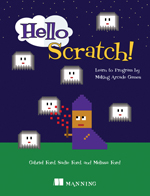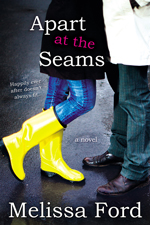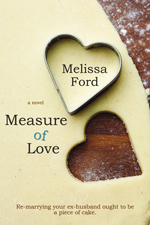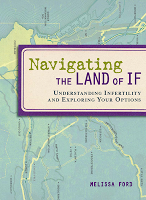MFA Sunday School (Ten: Sonnets)
![]() Welcome to MFA Sunday School, a once-a-week, free, online writing workshop. MFA Sunday School posts are uploaded on Sunday mornings, though you can read them or participate any time — the comment section is always open for people to post a link to their work or ask a question. You can subscribe to blog posts via the RSS feed, or look for them under the category heading “MFA Sunday School.” If this is your first time in “class,” you may want to jump back to the first post in the series in order to understand how things work, or peruse all of the past lessons as well as a glossary of terms by reading the MFA Sunday School Glossary and Course Archives.
Welcome to MFA Sunday School, a once-a-week, free, online writing workshop. MFA Sunday School posts are uploaded on Sunday mornings, though you can read them or participate any time — the comment section is always open for people to post a link to their work or ask a question. You can subscribe to blog posts via the RSS feed, or look for them under the category heading “MFA Sunday School.” If this is your first time in “class,” you may want to jump back to the first post in the series in order to understand how things work, or peruse all of the past lessons as well as a glossary of terms by reading the MFA Sunday School Glossary and Course Archives.
We’re returning to fiction next week, and getting into some heady stuff such as how to deal with rejection or getting over writer’s block. But right now, I want to jump back into a fixed form poem because these exercises are not only poetry in and of themselves; for prose writers, they are the verbal equivalent to sodoku. They are helping you problem-solve with words, and if you can do it here, fitting your thoughts into a restrictive poetic form, then you can figure out ways to get your character from point A to point B in your book. I promise you; trying other forms of writing only strengthens your capabilities in your chosen writing field whether that is writing blog posts or churning out novels.
The third form we’re going to look at is the sonnet (remember, we’ve already done the sestina and villanelle, and if you’re joining us for the first time today, delve back into the archives because we’re on lesson ten). Fixed form poetry is meant to free the mind by providing a structure much in the same way a house frees the person who lives inside to focus on things other than the elements outside.
I find sonnets very difficult to teach because the form is somewhat a mess. It began in Italy in the 13th century — a 14 line poem that was a little musicless song (sonetto means “little song”) with a set rhyme. And then people started playing with it — most notably the Earl of Surrey (though we’ve slapped Shakespeare’s name on the earl’s invention because he wrote a lot of them). But other poets started riffing off of Shakespeare, changing the meter or changing the rhyme. To simplify things, since we don’t have all day to walk through the various tweaks poets have brought to the form, we’re going to reduce it to two schools of thought: the Petrarchan sonnet and the Shakespearean sonnet (even though I really love the Spenserian sonnet… sniff).
Petrarchan sonnets are a conversation (actually, all sonnets are a conversation, but they are split in different ways). The first part of the poem is an octave (eight lines) which outlines the situation. Usually it’s a love problem, as in “dude, I love this person so much and they don’t even know I exist.” It could also be presenting an idea or question. An octave is just a fancy way of saying eight lines. If we’re working with 14 lines total, that leaves us with six lines for the sestet, which is the resolution (or answer if the writer poses a question in the octave). The ninth line of the poem, the start of the sestet (six line part) is called the “turn” or “volta.” It should be clear to the reader that you’re switching direction, making a proposal, saying what you wish would happen.
All sonnets (for the sake of reduction) follow iambic pentameter. If you’ve forgotten this meter, go back to the villanelle post and refresh your memory.
The rhyme scheme of the Petrarchan sonnet is somewhat fluid. The octave (first eight lines) are set in stone:
A
B
B
A
A
B
B
A
That’s how you get that song quality — the meter as well as that constant rhyme. All the “A” lines rhyme and all the “B” lines rhyme in their final word.
The sestet has some wiggle room. Some people use:
C
D
E
C
D
E
Some people play with it and make it C, D, C, C, D, C. There is also C, D, C, D, C, D. All are kosher.
An example of a Petrarchan sonnet is John Keats’ “On First Looking into Chapman’s Homer.” Classic Petrarchan in form: set meter and traditional rhyme scheme — A, B, B, A, A, B, B, A, C, D, C, D, C, D. There is a breakdown of the situation (he never could get into Homer until he found Chapman’s translation) with a turn line (“Then felt I like some watcher of the skies”) and a reaction (finding this translation made him feel like an explorer finding a new land).
Shakespearean sonnets are those poems you slogged through in high school while the boys in your class giggled when the teacher read “her breasts are dun.” Instead of an octave (eight lines) and a sestet (six lines), you have three quatrains (four lines) with a two line couplet. This form gives you more space to outline the situation because you get 12 lines to play with. The final couplet is the answer or the resolution.
All Shakespearean sonnets follow the same rhyme scheme (and all are written in iambic pentameter):
A
B
A
B
C
D
C
D
E
F
E
F
G
G
Think of Shakespearean sonnets as having a big lead-up, and then the final couplet hits the idea out of the park. That couplet needs to pack a punch because it’s the end thought for the reader. The final two lines are the “turn.”
Shakespeare wrote many free-standing sonnets as well as incorporating them into his plays. A good example is Sonnet 130, otherwise known as “My Mistress’ Eyes are Nothing Like the Sun.” For the first three quatrains (12 lines), Shakespeare puts down his woman, saying her eyes don’t sparkle like suns, her lips aren’t red enough, and her breasts don’t have that snow white creamy skin the Englishman craves. And then he hits it out of the park with that final couplet, stating that it doesn’t matter if she doesn’t measure up to traditional beauty standards because in Shakespeare’s eyes, she’s hot.
Pretty cool, right?
Homework: write a sonnet. And when you do, come back and leave a comment with a link to your sonnet posted on your blog. That way, future students can take a look at other examples of sonnets as well as visit their virtual classmates’ blogs.













1 comment
(Villanelle link takes you to poetry contest on BlogHer, not previous Sunday School. If this is intentional, then ignore/delete this comment!)